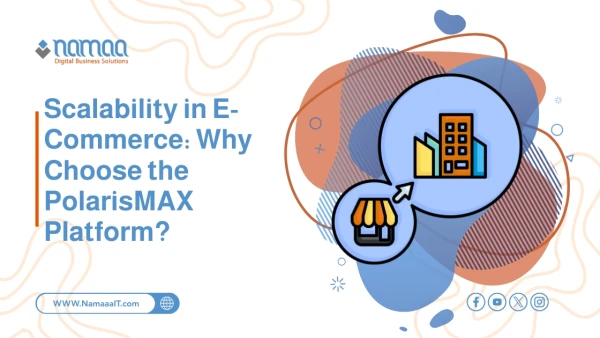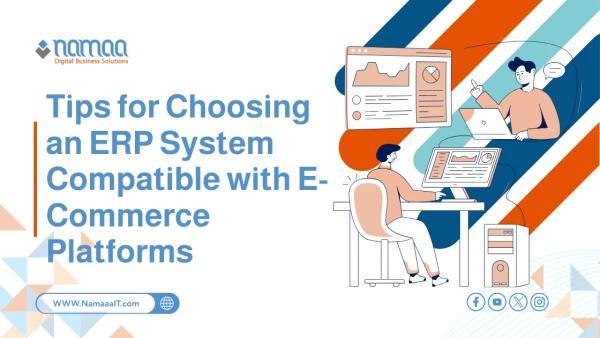In the era of digital transformation, the online store has become a strategic option that competes strongly with traditional retail branches. Many entrepreneurs wonder: How can an online store outperform a physical branch in generating revenue, despite the lack of physical presence of products and customers? The answer lies in the ability to reach a broader customer base around the clock and without geographical restrictions, while reducing operational costs like rent, staffing, and utilities. Plus, smart data and digital marketing tools enable e‑stores to optimize offers and target customers more effectively, boosting sales opportunities and maximizing profits compared to traditional stores.
Traditional Expansion vs. Digital Transformation
When your business—whether a pharmacy, cosmetics store, or any retail operation—reaches the growth stage, the inevitable question arises: how to expand effectively? The conventional path of opening a new branch may seem logical but is fraught with challenges and risks.
It involves careful site selection, high startup costs, and long-term commitments. Any misjudgment in location allure or demand volume can lead to heavy losses. Conversely, digital transformation offers a smarter, strategic alternative. Instead of replicating your model elsewhere, you can create a completely new distribution channel through an online store.
This channel isn’t confined to a neighborhood or city—it opens your business to customers nationwide—transforming the branch from a fixed, physical entity into a dynamic, widely accessible digital platform.
Cost Analysis: Online Store vs. Physical Branch
To grasp the massive financial gap between the two options, it’s essential to break down both direct and indirect costs. Launching a physical branch means entering a vortex of huge expenses that drain capital long before any returns can be realized, whereas an e‑store offers a leaner, more cost-efficient model.
Physical Branch Costs
- Substantial setup investments: Rent or purchase costs in high-demand areas—often expensive.
- Fixtures and décor: High spending on design, shelving, lighting, and signage.
- Branch-dedicated inventory: Requires tying up significant capital in stock.
- Fixed overheads: Salaries for staff (manager, salespeople, cleaners), plus utilities and maintenance.
Online Store Costs
- Platform & development: Monthly/yearly subscription fees or one-time development costs far lower than physical setup.
- Digital marketing: Flexible budget that can be optimized based on results.
- Variable expenses: Payment gateway fees and shipping costs tied directly to sales volume.
Return on Investment (ROI): Why E‑Stores Win
The online store’s superiority isn’t just due to lower initial costs—it also achieves a higher and faster return on investment. This edge is driven by factors that make e‑commerce a powerful growth engine, challenging traditional branches.
While a physical branch serves a limited geographic area, an online store shatters regional barriers, reaching customers in cities and provinces previously unreachable. This massive expansion in the potential customer base directly translates to revenue growth.
Key Revenue Drivers in E‑Commerce:
- 24/7 availability: Your “doors” never close—customers can shop anytime, boosting sales beyond typical business hours.
- Low operating costs: Absence of rent and large sales teams increases profit margins per sale.
- Precise targeting: Digital marketing tools allow you to reach specific audiences, optimizing ad spend and ensuring your message hits the right customers.
- Data & analytics: Accurate insights into your best-selling products and customer behavior empower informed decisions to refine offerings and boost sales.
Efficient Inventory & Shipping Management
One of the biggest operational advantages of online stores is centralized inventory management. Traditional expansion requires duplicating inventory per branch, tying up capital across multiple locations and complicating stock tracking.
With e‑commerce, all sales can come from a single, central inventory—possibly your main branch’s stock. This significantly reduces capital locked in inventory, improves cash flow, and simplifies product tracking.
Shipping, once a complex challenge, is now streamlined thanks to logistics providers offering reliable delivery solutions—turning distribution into a variable-cost service tied to actual sales.
Automation & Minimizing Human Error
Operational efficiency is key to business success, and here e‑commerce platforms shine through automation. Instead of manual, error-prone processes, the online store automates vital tasks, freeing you to focus on growth strategies. This shift not only reduces costs but also enhances accuracy and improves customer experience.
Automated Processes Include:
- Order processing: Automatic order confirmation, invoicing, and delivery notifications.
- Stock updates: Inventory is instantly adjusted across all sales channels, preventing overselling.
- Customer communication: Email reminders for shipping stages or abandoned shopping carts.
- Analytical reports: Automated insights into sales, top products, and campaign performance for data-driven improvements.
Choosing the Right Platform: The Role of Integrated Solutions Like PolarisMAX
Launching an online store isn’t just about creating a nice product showcase—it’s about building a fully integrated ecosystem to manage every facet of your digital business. The difference between rapid success and operational hiccups often lies here.
Using fragmented tools can lead to inventory chaos and order-tracking issues. Hence, selecting a complete e‑commerce platform like PolarisMAX becomes a strategic accelerator for your growth. These platforms offer much more than storefronts—they provide centralized systems that connect every business aspect.
What an integrated platform like PolarisMAX offers:
- Unified inventory system: Syncs stock between physical and online channels for real-time updates and error reduction.
- Comprehensive order management: Tracks each order from purchase to delivery.
- Integrated payment & shipping: Secure gateways and shipping integrations streamline checkout and fulfillment.
- Built‑in marketing tools: Manage discounts, promotions, and analyze campaign performance all in one place.
- Scalability: Built on sturdy tech foundations, ready to grow without overhauls.
Frequently Asked Questions
1. How can I ensure my online store shows up on Google to attract customers?
This requires proactive SEO: using relevant keywords in product titles/descriptions, creating valuable content (such as blog posts), and ensuring your platform is fast and mobile-responsive.
2. Can an online store support my physical branch, and vice versa?
Absolutely. Offer services like “Click & Collect” where customers order online and pick up in-store, reducing shipping costs and boosting in-branch visits. Branches can also serve as return points—enhancing customer trust.
3. How do I handle customer service and returns online?
Have clear and accessible return/exchange policies. Provide easy communication channels—chat, email, or WhatsApp. Fast responses and effective support build loyalty.
4. How secure is my customers’ data and payment information?
Security is vital. Ensure your store uses SSL/TLS encryption (look for HTTPS and a lock icon). Partner with trusted payment gateways. Integrated platforms typically offer strong security infrastructure to protect customer data.
5. Do I need extra licenses to sell products online, especially for pharmacies?
Yes—depending on your jurisdiction and product type. For example, selling pharmaceuticals may require approval from health authorities. Also, ensure your trade license covers e‑commerce to avoid legal issues.
Summary
✅ Launching an online store can cut startup costs by up to 90% compared to a physical branch—saving massively on rent and décor.
✅ It expands your potential customer base by over 1,000%, scaling from local neighborhoods to nationwide reach, accelerating ROI.
✅ Operating 24/7 can boost total sales by around 25% from after-hours shoppers.
✅ Automated order and inventory processing reduces manual workload by 70% and virtually eliminates errors—saving at least one full employee’s cost annually.
✅ Using an integrated platform like PolarisMAX ensures 99% accuracy in stock syncing between online and offline channels—minimizing stockouts and delighting customers.




.webp)


.webp)
.webp)
